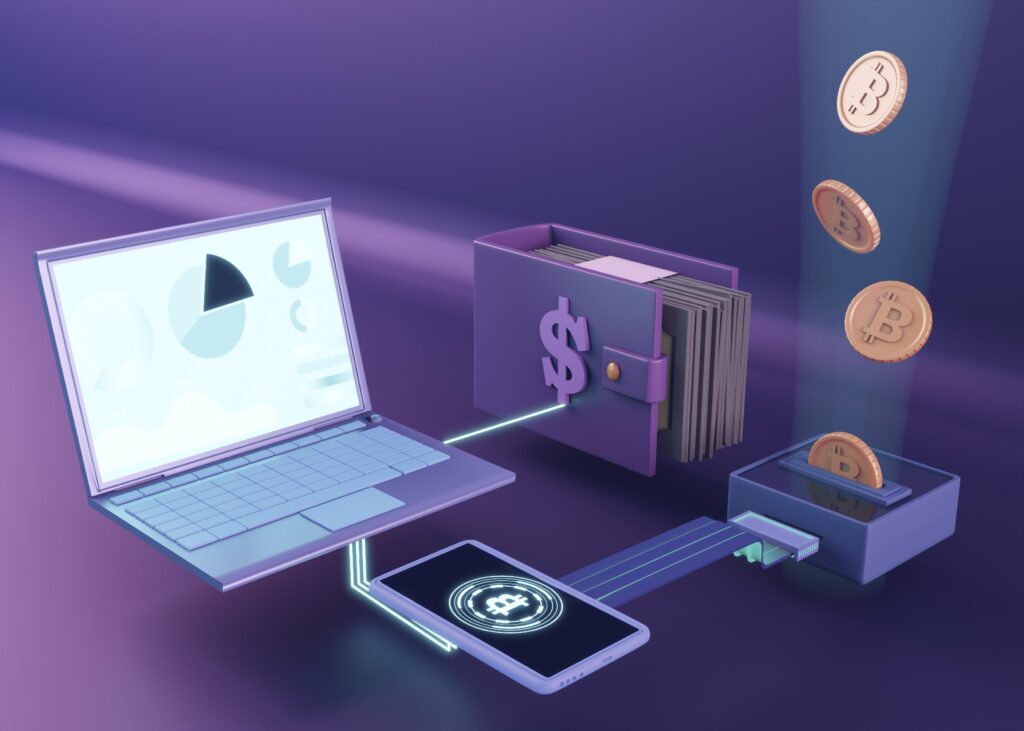The crypto lending platform for beginners in 2024 One of the most innovative developments in the cryptocurrency space is loan services. Even though they have been around for a long time, cryptocurrency loans gained popularity in 2020 as the DeFi industry took off. People are choosing cryptocurrency lending platforms over traditional credit and loan institutions, making them a mainstay in the market!
This article aims to explain cryptocurrency lending, including its benefits and drawbacks. Additionally, it offers recommendations for the top sites for cryptocurrency lending in 2024 for those who try it.
What Is Crypto Lending?
Crypto lending is the practice of making loans in the form of cryptocurrencies, as the name implies. Crypto lending is the practice of making loans in the form of digital assets, or cryptocurrencies, using concepts from traditional finance. Similar to conventional loans, borrowers receive capital plus a portion of their profits, which they must subsequently repay.
Nonetheless, there are several important ways in which traditional lending and crypto lending differ greatly. First, blockchain technology supports its operations in a largely decentralized setting. To avoid using conventional middlemen like banks or credit agencies, this calls for a peer-to-peer lending system.

The second significant distinction is the democratization of the loan application process. Anyone can become a leader in the cryptocurrency lending space. This proficient by having their cryptocurrency “locked up” or “staked” for a predetermined amount of time under a smart contract. After using the money, the borrower repays the lender with interest and increased income.
Lenders receive compensation in the form of interest paid by borrowers, giving them a way to make passive income. For many holders of digital currency, crypto lending is an alluring option because of this aspect as well as the inherent possibility for faster growth rates when compared to regular savings accounts.
Finally, it is imperative to draw attention to the risks and uncertainties that exist in the still-developing and unstable cryptocurrency sector, as these may have an impact on the stability of profits from crypto lending. These include possible dangers connected to lending platforms and protocols, as well as the price volatility of the underlying coin. But when it comes to crypto loans, as with any financial endeavor, considerable thought and due diligence are necessary.
Types Of Crypto Loans
Collateralized Loans
The most prevalent kind of crypto loans are those that are affluent. Under this arrangement, borrowers secure a loan by pledging a set quantity of cryptocurrency as security. Collateral is detained by the lender until the borrower pays back the loan plus interest. If the borrower defaults, the lender may be able to recoup money by selling the collateral. Due to the security of the collateral, collateralized loans are comparatively low risk for lenders.
Unsecured Loans Or Flash Loans
Flash loans, usually referred to as unsecured loans, don’t need collateral. Borrowers can get money without offering any security, but there is a catch. Repayment of flash loans must occur during the same transaction. The entire transaction is transposed and the loan is abolished if the borrower doesn’t comply. Frequently utilized for arbitrage possibilities and urgent capital requirements, flash loans carry a high degree of risk.
Hybrid Loans
The components of secured and unsecured loans blend into hybrid loans. Collateral is provided by borrowers, although ownership of it may not pass to the lender right away. Compared to unsecured loans, this is a safer alternative for lenders because they can confiscate the collateral if the borrower defaults.
How Crypto Lending Works
You can borrow money using cryptocurrency or cash with the help of crypto lending; the fees are usually between 5 and 10 percent. In essence, it’s a secured personal loan.
Getting Started With Crypto Lending Platforms
What steps engage in using cryptocurrency lending platforms? Conduct research, make comparisons and contrasts, and engage with the cryptocurrency community.
You will need to register on a CeFi platform using your email address and password. You must also provide proof of identity along with an ID, name, phone number, and address.
Your wallet must be related to a DeFi platform. There’s no shortage of well-liked options. As long as you keep your seed phrase (12–24 words) secure, hot wallets like MetaMask are simple to set up.
If you are serious about your security and privacy, cold wallets such as Trezor or Ledger are excellent options. Due to their total offline nature, they are safer. Crypto stays in your palm at all times.
Benefits Of Crypto Lending

- Reduced interest rates are in contrast to conventional loans.
- A possible source of passive revenue for lenders.
- Blockchain technology enables speedy and effective transactions.
- For decentralized systems, there may occasionally be no need for security checks or KYC
Conclusion
Amidst the cryptocurrency ecosystem, crypto lending has surfaced as a novel financial solution that provides lenders and borrowers diverse methods to utilize their assets. Notwithstanding the obvious advantages, it’s just as critical to recognize and control the dangers involved, such as market volatility and weaknesses in smart contracts.
Consider your loan conditions, interest rates, platform security, collateral selection, and regulatory compliance before you participate in cryptocurrency lending. It will be easier for you to navigate this dynamic and fascinating financial landscape if you are aware of the stages involved in lending.
Choose reliable platforms with a reputation for security and transparency if you want to investigate crypto loans. Do your homework. Maintain current awareness of the most recent advancements in the cryptocurrency lending industry and modify your plan as necessary.
Crypto lending can contribute significantly to your financial portfolio if you give it serious thought and make wise decisions.
